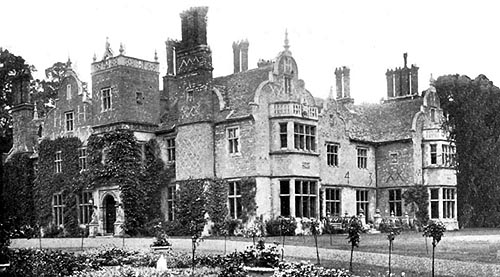 |
 |
|||
|
|
Lambourn Place was the house of Grandisons Manor in the village of Lambourn. It stood just north of the church and had a small park extending in the same direction. Some people say it stood on the site of one of King Alfred the Great's palaces. In 1489, it was known as 'Rogers' Manor' but, by 1640, it was called 'Place House'. The Rogers heiress brought the manor to her husband, Sir William Essex, whom she married in 1487 at the age of thirteen. He was ten. Sir William got rather too involved with what was perceived as opposition to the religious reforms of Henry VIII's reign. He had a panic meeting with Sir George Throckmorton at the Place in 1536, after one of his servants had seen his copy of rebel demands and had started handing out further copies amongst the clergy of Reading. He was advised to hand his servant over to the authorities, but this didn't save him from a spell in gaol! Sir William's great great grandson, also Sir William, but a baronet, was the friend and patron of the inventor, William Bush. In 1607, he built a 'ship on wheels' in the garden of Lambourn Place. The house was festooned with flags and coats of arms on the day that Bush planned to travel in this vessel, by air, land and water, starting by air from the top of the adjoining church tower - and he pretty much did it. Three years later, Sir William sold up. The house was eventually purchased by the Organ family who may have rebuilt the old Tudor place. From them, it was inherited by the Hippisleys. They were a younger branch of the great Hippisley family from Ston Easton Park in Somerset. They were also relatives, through his second wife's first husband, of the political writer, John Coxe Hippisley, who lived at both Ston Easton and Warfield Grove. It
is not clear when the old house was demolished, but that shown in the
photograph was certainly built in 1843 by TL Donaldson for Henry Hippisley
Junior. It was a fine example of Tudor Revival architecture with
elegant dutch-gabled wings and the date '1843' written in the brickwork. Was
any of the previous building incorporated into it? Mr. Hippisley was not remembered
with affection in the village, where, despite having rebuilt the local
almshouses, he was thought to have defrauded a number of local charities.
His repentant ghost is said to haunt the site of his old home. His son sold
up to his brother-in-law, Charles Grove Edwards, in 1886. He never lived at
Lambourn Place but rented it out to tenants. These included the famous
racehorse trainer, James Rone Humphreys (d. 1896), who established his
stables on the estate, and the sculptor and traveller, Herbert Ward. The
latter was visited there by Roger David Casement, the British diplomat who
became an Irish Unfortunately, after the First World War, the house fell into decay and it was demolished in 1938. All that remains is a 17th century stone doorway into the old gardens, sporting the Hippisley coat of arms, and a bizarre sculptured bust of Charles I now in the church. The area is now a housing estate.
|
|||
| © Nash Ford Publishing 2010. All Rights Reserved. | ||||



 Lambourn
Place
Lambourn
Place